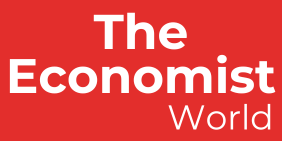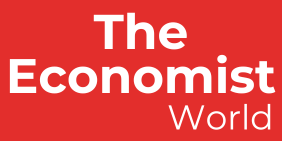Once a rising economic power in South Asia, Pakistan now finds itself at the bottom of the regional ladder. Fifty years ago, the average Pakistani had a higher income than his South Asian peers. Today, he earns about half as much. What went wrong, and what must be done to turn things around?
The roots of Pakistan’s economic troubles go back decades. A booming population and poor economic management have combined to sap the country’s ability to save and invest. Compared to its neighbours — India, Bangladesh, and Sri Lanka — Pakistan’s living standards, healthcare, and education have all fallen behind.
One major issue is population growth. Pakistan’s population has quadrupled in the last 50 years, leaving the country with a much larger share of young, non-working dependents. That imbalance limits how much families can save, which in turn limits national investment. In countries like India and Bangladesh, the ratio of working-age people is much higher, supporting faster economic growth. Meanwhile, Pakistan struggles to keep up.
But demographics aren’t the only problem. Pakistan has also been plagued by chronic policy mistakes. Governments have repeatedly spent beyond their means, leading to mounting debt. Over time, interest payments have ballooned to the point where they now consume nearly 60 per cent of government revenue. This leaves little room for spending on health, education, or infrastructure.
The country’s saving rate could have been 10 percentage points higher if its working-age population ratio matched that of its neighbours
Foreign exchange shortages have triggered repeated economic crises, with Pakistan having to turn to the International Monetary Fund (IMF) more than 20 times. The latest crisis erupted during the Covid-19 pandemic and worsened after the Russia-Ukraine war drove up oil prices. At one point, Pakistan had barely enough dollars in reserve to cover two weeks of imports.
In 2023, Pakistan secured another IMF bailout. That programme, and the subsequent one agreed last year, along with debt rollovers from international creditors and falling oil prices, helped stabilise the economy. Foreign reserves recovered somewhat, inflation cooled, and the rupee steadied. However, the IMF programme demands sharp tax increases and tight spending limits — an approach that critics say could choke growth and worsen social problems.
Instead, a different strategy is needed: one that prioritises more gradual but deeper tax reform and increased investment in health, family planning, and education — especially for women. Improving access to these services would boost productivity and help slow population growth, freeing up more resources for savings and investment. In turn, that would support faster economic growth over time.
There is no escaping the need to collect more taxes. Only one to two per cent of Pakistanis pay any income tax at all, and the government’s revenue receipts — at around 12pc of the GDP — are amongst the lowest worldwide.
The agriculture, retail, and real estate sectors, which together constitute the bulk of the economy, are effectively outside the tax net. No country can function like this. So, tax reforms should aim to raise an extra 6pc of GDP over the next five years. Even if that is achieved, Pakistan would still rank in the lowest quarter of all countries in terms of tax receipts.
Only with more revenue can Pakistan afford to invest in key social sectors. Clawing back wasteful spending, such as subsidies for the well-to-do and the loss-making state enterprises, is a must. However, the savings from such efforts alone will not be enough to meet even basic social and infrastructure development needs.
With Pakistan also ranking among the lowest globally in terms of the government’s noninterest spending level (relative to the size of the economy), some of the tax revenue gains should be put back into the economy via spending to expand education and health access for those who lack it.
Key to this alternative strategy is international support. Without more low-cost loans (so-called “concessional financing”) from global institutions like the World Bank and countries that lend to Pakistan, the government will be forced to borrow from local and international markets at high interest rates. That would keep debt costs high and continue to crowd out private investment.
Addressing Pakistan’s population growth is critical. The country’s saving rate could have been 10 percentage points higher if its working-age population ratio matched that of its neighbours. More savings would mean more investment and faster growth. Better access to family planning, education for girls, and jobs for women could help Pakistan achieve this demographic shift, as seen in Bangladesh and other countries.
In short, Pakistan’s path to recovery requires more than just balancing budgets — it needs sustained investment in its people, smarter tax policy, and international cooperation. Without these changes, Pakistan risks being stuck in a cycle of crises for years to come. With them, a brighter economic future is possible.
The writer is a former senior official of the IMF
Published in Dawn, The Business and Finance Weekly, April 28th, 2025


